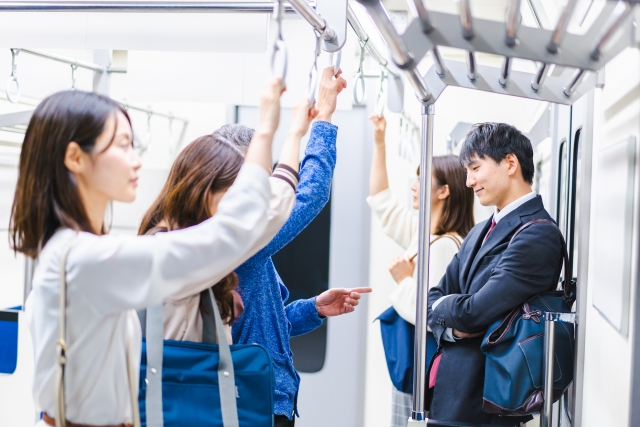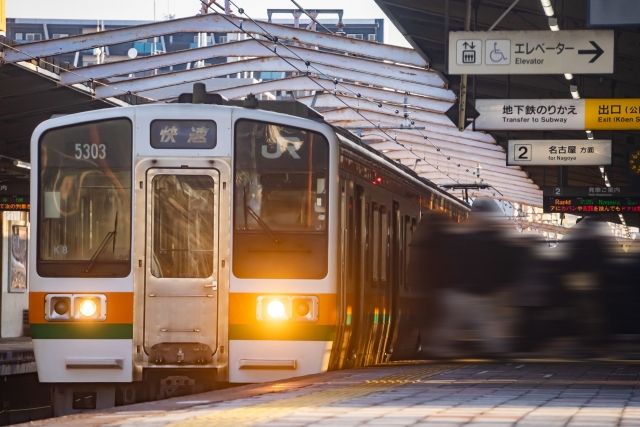When it comes to public transportation, Japan’s railway system is among the world’s most efficient and extensive, making train travel a quintessential part of the Japanese experience.
However, navigating this intricate network can be a bit overwhelming for newcomers.
In this guide, we break down the process into manageable steps, from buying tickets to exiting the station.
How to Use a Train
The process of riding a train in Japan can be categorized into six key steps. Here’s a breakdown:
STEP 1: Purchase a Ticket or IC Card
There are two primary ways to pay for train rides in Japan: tickets and IC cards.
You can purchase tickets from automated vending machines at any station, and they are generally suitable for one-off journeys.
IC cards, on the other hand, are rechargeable smart cards that can be used on most trains and buses throughout the country, offering a much more convenient option for frequent travelers.
| Ticket | IC Card |
|---|---|
| Purchased for each trip | Rechargeable and reusable |
| Suitable for one-off journeys | Perfect for frequent travelers |
STEP 2: Enter the Station
After purchasing your ticket or recharging your IC card, the next step is to enter the station. Scan your ticket or tap your IC card on the reader at the automated ticket gates to enter.
STEP 3: Locate Your Platform and Train
This is often the most confusing step for first-time visitors, but don’t worry.
Most signs and electronic information boards at stations have English translations. Verify the train line, direction, and departure time.
If you’re using an IC card, the fare is automatically calculated and deducted when you tap out at your destination.
STEP 4: Board the Train
Stand behind the marked lines on the platform and wait for the train.
After the train arrives and comes to a complete stop, let passengers exit first before you board.
Once inside, make sure to turn your mobile phone to silent mode and refrain from talking loudly as a courtesy to other passengers.
STEP 5: Exit at Your Destination
Pay close attention to station announcements (usually made in both Japanese and English) so you don’t miss your stop.
When you arrive, exit the train and walk towards the ticket gates.
If you’re using a ticket, insert it into the dedicated slot at the gate. If you’re using an IC card, tap it on the reader at the gate to calculate and deduct your fare.
STEP 6: Leave the Station
After exiting the ticket gates, follow the signs to your desired exit.
Large stations may have multiple exits leading to different areas, so it’s crucial to know which one you need.
If you’re unsure, don’t hesitate to ask a station staff member for assistance.
STEP 7: Respect Train Etiquette
Japanese society places a high emphasis on order and respect for others.
This is evident in the unspoken rules that govern train etiquette. Here are some key points to remember:
- Keep Quiet: Avoid loud conversations and phone calls. If you must take a call, do so quietly or move to the area between cars.
- Yield to Priority Seats: If you’re sitting in a priority seat, be prepared to give up your spot for elderly, disabled, or pregnant passengers.
- No Eating or Drinking: Unless you’re on a long-distance train, avoid eating. If you must eat, choose odorless food.
Additional Tips for Train Travel in Japan

Here are a few more tips to enhance your train travel experience in Japan:
- Avoid Rush Hour: Trains can be extraordinarily crowded during rush hours (usually 7:30 – 9:00 AM and 5:00 – 8:00 PM). If possible, avoid these times for a more comfortable ride.
- Download a Train App: Apps like HyperDia and Google Maps can help you navigate the train network more easily, providing accurate train times, routes, and fares in English.
- Consider a Rail Pass: If you plan on traveling extensively by train, consider purchasing a rail pass like the Japan Rail (JR) Pass for unlimited travel on most JR-operated routes.
FAQs on Using Trains

As a foreign traveler, you might have some questions about train travel in Japan. Here are some frequently asked questions and their answers:
Is English spoken on trains and at stations?
Yes, in major cities and tourist areas, station signs and train announcements are typically bilingual, in both Japanese and English. Plus, most ticket machines have an English language option.
Can I use credit cards to buy tickets or recharge IC cards?
Yes, most ticket vending machines at train stations accept credit cards, especially in big cities. However, it’s always a good idea to carry some cash just in case.
What do I do if I lose my ticket or IC card?
If you lose your ticket or IC card, report the loss to a station staff member as soon as possible. They can help you purchase a new ticket or issue a new IC card.
Conclusion
Riding a train in Japan may seem intimidating at first, but once you understand the basics, it becomes an easy and efficient way to explore the country.
So, purchase your ticket or IC card, find your platform, and embark on your journey.
Just remember the steps and tips provided in this guide, and you’ll be navigating the Japanese railway system like a pro in no time.




comment